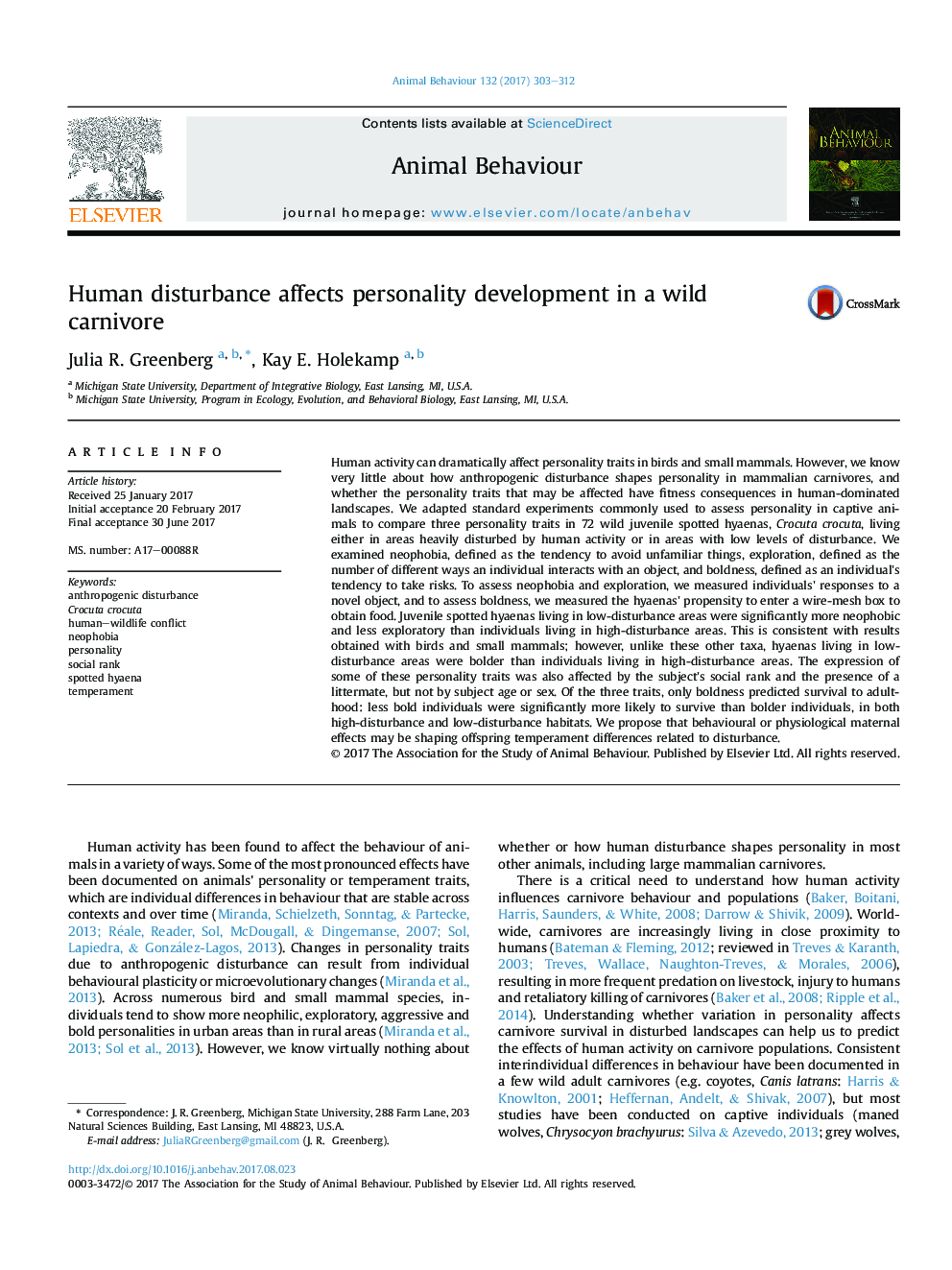| کد مقاله | کد نشریه | سال انتشار | مقاله انگلیسی | نسخه تمام متن |
|---|---|---|---|---|
| 5538304 | 1552196 | 2017 | 10 صفحه PDF | دانلود رایگان |
عنوان انگلیسی مقاله ISI
Human disturbance affects personality development in a wild carnivore
ترجمه فارسی عنوان
اختلال در انسان بر روی رشد شخصیت در یک گوشتخواری وحشی تاثیر می گذارد
دانلود مقاله + سفارش ترجمه
دانلود مقاله ISI انگلیسی
رایگان برای ایرانیان
کلمات کلیدی
موضوعات مرتبط
علوم زیستی و بیوفناوری
علوم کشاورزی و بیولوژیک
علوم دامی و جانورشناسی
چکیده انگلیسی
Human activity can dramatically affect personality traits in birds and small mammals. However, we know very little about how anthropogenic disturbance shapes personality in mammalian carnivores, and whether the personality traits that may be affected have fitness consequences in human-dominated landscapes. We adapted standard experiments commonly used to assess personality in captive animals to compare three personality traits in 72 wild juvenile spotted hyaenas, Crocuta crocuta, living either in areas heavily disturbed by human activity or in areas with low levels of disturbance. We examined neophobia, defined as the tendency to avoid unfamiliar things, exploration, defined as the number of different ways an individual interacts with an object, and boldness, defined as an individual's tendency to take risks. To assess neophobia and exploration, we measured individuals' responses to a novel object, and to assess boldness, we measured the hyaenas' propensity to enter a wire-mesh box to obtain food. Juvenile spotted hyaenas living in low-disturbance areas were significantly more neophobic and less exploratory than individuals living in high-disturbance areas. This is consistent with results obtained with birds and small mammals; however, unlike these other taxa, hyaenas living in low-disturbance areas were bolder than individuals living in high-disturbance areas. The expression of some of these personality traits was also affected by the subject's social rank and the presence of a littermate, but not by subject age or sex. Of the three traits, only boldness predicted survival to adulthood: less bold individuals were significantly more likely to survive than bolder individuals, in both high-disturbance and low-disturbance habitats. We propose that behavioural or physiological maternal effects may be shaping offspring temperament differences related to disturbance.
ناشر
Database: Elsevier - ScienceDirect (ساینس دایرکت)
Journal: Animal Behaviour - Volume 132, October 2017, Pages 303-312
Journal: Animal Behaviour - Volume 132, October 2017, Pages 303-312
نویسندگان
Julia R. Greenberg, Kay E. Holekamp,
